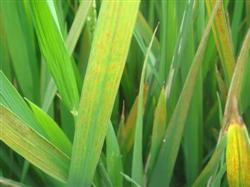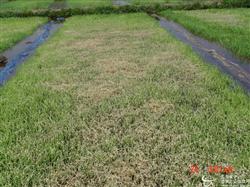Rice seed soaking technique

The main diseases transmitted by rice seeds are evil seedling disease, rice blast, rice false smut, bacterial leaf blight, stripe blight transmitted by gray planthopper at seedling stage and so on. At present, it is the time for rice seed soaking in Qilin District. When soaking rice seeds, demonstration households must insist on soaking rice seeds with chemicals, and its main purpose is to kill the germs carried by rice seeds. The commonly used seed soaking agents in our district are "fungus Chong Qing", "imidacloprid" and so on. There are three main points to be mastered in the method of use. First, the amount of medicine and the amount of water. Add 10% imidacloprid to 1.5% imidacloprid, mix the two agents first and then add a small amount of water to make a paste, then add 8 kg of water and dilute evenly. Second, the amount of rice seed and liquid: 5-6 kg of the selected rice seeds were immersed in the mixed solution of 8 kg of Chong Chong Qing and imidacloprid and turned up and down several times. The seed soaking container should be covered and placed in a cool place away from light. If a large number of rice seeds need to be soaked in the same container, the medicine solution can be prepared according to the above proportion. Third, seed soaking time and air temperature: when the daily average temperature is 18: 20 ℃, the seed is soaked for 60 hours, and the seed is soaked for 48 hours at 23: 25 ℃. The seed soaking time can also be based on sufficient moisture absorption of the seed. The standard is that the grain hull is transparent, the rice grain is white, and the rice grain is easy to break without sound when the glume is removed. When the seed can be crushed by hand, it shows that the seed has absorbed enough water. It usually lasts about 3 days. After soaking the seeds, there is no need to rinse and sprout directly.
- Prev

Diagnosis and control of rice seedling rot
Rice seedling rot is a general term for rotten seeds, rotten buds and dead seedlings caused by pathogen infection or non-pathogen influence. It can be divided into two categories: infectious and non-infectious (physiological). Non-infectious rotten seedlings mainly refer to those caused by adverse environment; infectious rotten seedlings refer to those caused by adverse environment, such as Pythium, Fusarium, etc.
- Next

Matters needing attention in Young panicle differentiation of Rice
Matters needing attention in Young panicle differentiation of Rice
Related
- The first cup of black tea in spring, the flavor and history of tea gardens in Kenya, Africa
- The computer can not only choose potatoes, but also grow tea rice. AI will grow winter oolong tea champion.
- It is not only the inflated tea bitten by insects, but also engraved with the four seasons tea in Beipu.
- The Oriental Beauty Tea Festival in Zhuxian County takes the stage at the weekend to experience the plus-size feast of oil tea.
- & quot; Oriental Beauty Tea & Exploration of Emei in Hsinchu, the hometown of quot;
- The new variety of strawberry "Tainong 1" dessert is the first choice with mellow aroma. Crimson gorgeous
- History of Tea in Taiwan: from Wild Inner Mountain to Export Tea Garden
- Two types of Taiwan Oriental Beauty Black Tea won the British three-Star Award for Childhood Tea Xiang Zhang Jiaqi changed from pilot to champion tea maker.
- Banana species and varieties: the planting history of Taiwan Xianren banana and dwarf banana is long, is banana disease resistant?
- Coffee planting Technology: Qianjie Coffee from Seedling to harvesting

